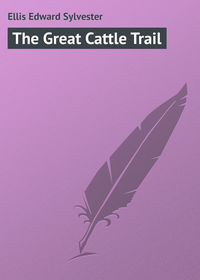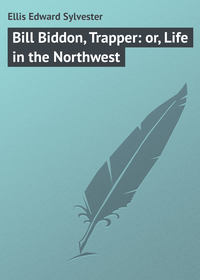 полная версия
полная версияEllis's Primary Physiology. Or Good Health for Boys and Girls
CHAPTER VII
EXERCISE
Boys and girls are not likely to believe they need any instruction as to exercise. They are so fond of play that all they ask is a chance and they will use it to the utmost.
That form of exercise is best which brings most muscles into action. It should not be too violent nor continued after one is tired. It should be in the open air, and some kind of game is preferable because it also engages and interests the mind.
TESTS OF SKILLBase-ball, rowing, foot-ball, hare and hounds, skating, lacrosse, lawn tennis and similar tests of skill have become so popular in this country that the young need to be restrained from indulging too much in them. After one's school-days are over and a young man takes up some sedentary occupation, he should manage to gain exercise every day.
The gymnasiums afford the best forms of exercise, but boys and girls can walk, run, and use some of the simpler forms of gymnastics at their homes. They should make sure they breathe pure air, that they do not form bad habits, and are regular in everything daily required of them.
What form of exercise is best? What should be guarded against? Where should it be? What is preferable?
What games are popular? What should every boy do, after his school-days are over?
What of the gymnasiums? What can be done by all boys and girls? Of what should they make sure?
CHAPTER VIII
THE ART OF SWIMMING
Every boy and girl should learn to swim. Instances are likely to arise, where a knowledge of the art will not only enable you to save your own life, but that of some dear friend.
When ready to take your first lesson in swimming, plunge into the water until the head and body are cooled. Then, standing where the water reaches your waist, lie down gently on your face, head erect as if walking, with the mouth just above the surface. Lift your feet from the bottom and strike them out in imitation of a frog. At the same instant or a second later, throw your arms, palms outward, from the front of your breast, drawing them in and striking out as before.
You will fail a good many times before you learn to swim, but do not give up. You will perhaps swallow some water, and in spite of all you can do, your head will drop more than once under the surface; but, if you will keep trying, you will soon find yourself able to make two, three or more strokes, before you sink. A little practice will complete your mastery of the art.
It is well to use helps at the beginning. A friend may hold up your chin, or a light float may be fastened behind your shoulders. The body of a person is very little heavier than water, and a slight exertion, rightly directed, will keep it afloat for hours.
FLOATINGThe most important step, after learning to swim, is to learn how to float. A skillful swimmer may find himself overtaken by cramp while in deep water. He can turn upon his back and float until he recovers or help reaches him. In case of shipwreck, or where a person is forced to stay a long time in water, he can rest by floating.
Taking your position in water, no higher than your breast nor shallower than your waist, you lie very gently on your back, with your chest elevated, your hands on your stomach and your feet extended in a straight line, close to the surface. If you wish to swim on your back, you have only to draw up your legs and strike out as when swimming in the natural position. It is a poor method, however, as you cannot see in what direction you are going, and will soon exhaust your strength.
After learning to swim, there are many fanciful movements which can be easily learned. They have no special value, but afford amusement to those who look on or engage in them.
You cannot be too careful while learning to swim. Boys are apt to be venturesome and think their parents are too timid on their account. You should make it a rule never to go into water beyond your depth until you can swim very well. If this rule should be followed the number of deaths from drowning would be greatly lessened.
Why should every boy and girl learn to swim?
Give directions for the first lesson in swimming.
What is sure to follow?
What helps may be used at the beginning?
Show the advantage of knowing how to float in the water.
Show how a person may float.
What is said of fanciful movements in the water?
What care should boys exercise?
CHAPTER IX
HOW TO TREAT DROWNED PERSONS
Many persons are drowned every month, and almost every day. Hundreds doubtless could be saved by a knowledge of the art of swimming, while others could have been revived, had the proper means been used.
When any one believes he is drowning, he becomes frantic and his fierce struggles only hasten his death. If a friend swims to his rescue, there is danger that he will throw his arms around his rescuer and cause both to drown.
If the person in danger will keep still, when his friend seizes his hair or arm, he can readily be taken ashore. If a swimmer finds his sinking friend frantic, it may be necessary to strike him a violent blow between the eyes so as to stun him for a minute or two.
A drowning person generally rises twice before sinking the last time. Those who have been unconscious ten, fifteen, twenty minutes and sometimes longer, have been resuscitated or brought back to life. What is done, therefore, must be done without delay. Should you be present when a drowned person is taken from the water, you ought to know exactly what to do.
If any one can be spared to go for the doctor, let him run with all speed. The instant the body is brought to land, turn it upon the face, with a hard roll of clothing under the pit of the stomach. This roll can be readily made from your own clothing or that of others if present. Put one wrist of the patient under his forehead so as to keep his mouth off the ground.
Then, with your hands well spread upon the patient's back, above the roll of clothing, press down with the whole weight of your body, pushing forward at the same time. Repeat this two or three times, with quickness and vigor. The object of the movement is to force the water from the lungs, and it must occupy very little time, for there is none to throw away.
Having freed the lungs so far as possible from water, turn the patient on his back, face upward, with the hard roll of clothing beneath his back. Bend the head backward and downward, so that the throat is stretched to the utmost. Place his hands on top of his head, and, if there be any one standing near, let him tie the wrists with a single twist of the handkerchief.
All the clothing must be instantly stripped off to the waist. Kneel astride the patient's hips; grasp the front part of the chest on both sides of the pit of the stomach, your thumbs pointing to the patient's chin and your fingers fitting into the grooves between the short ribs.
Brace your elbows firmly, making them rigid with your sides and hips, while your knees serve as a pivot. Press the sides of the patient firmly together, throwing yourself slowly forward for a second or two until your face almost touches his and your whole weight presses upon his chest. End this pressure with a sudden short push, which will send you back to the kneeling posture.
Stop for two or three seconds, so as to allow the ribs to spring back into position. Then repeat this bellows-blowing movement as before, gradually increasing the rate from seven to ten times a minute. Watch closely, and if you detect a natural gasp, do not interrupt it, but as the ribs sink, gently press them and deepen the gasp into a long breath. Continue to give this help, until the natural breathing is fully resumed, but do not cease your efforts for fully an hour or longer.
Avoid impatient vertical pushes; the force must be upward and inward. If a second person is present, he should pull the end of the tongue of the patient out of a corner of his mouth and hold it there, using his handkerchief or piece of cotton rag. This helps to give the air free passage to and from the lungs.
What causes a great many deaths from drowning?
How does a person act when he believes he is drowning? What is he likely to do if a friend swims to his rescue?
What may be done if the drowning person keeps still? What, if he becomes frantic?
How often does a drowning person generally rise? How long after drowning has a person been resuscitated or brought back to life?
What about the doctor? Now, describe very carefully the first step to be taken the instant a drowned person is brought to land. What should be done with his wrist?
What next should be done? In what manner and how often should this be done? What is the object of the movement?
After freeing the lungs, so far as possible, from water, what is the next step? What should be done with his hands?
What of the patient's clothing? What next should be done?
Having placed yourself astride the patient's hips, describe what should be done next.
What are the next steps? What should be done if a natural gasp is detected? How long should you continue your efforts to restore the patient to life?
What should be avoided? What should be done by a spectator, if there be one?
Now tell me precisely what to do from the moment a drowned person is taken out of the water until he is resuscitated or it is proven he is beyond help. (The teacher must insist on an answer, correct in every particular, for it is evident that unless he knows every step, the pupil's knowledge is useless.)
CHAPTER X
ANOTHER METHOD OF TREATMENT IN CASES OF ASPHYXIA FROM DROWNING, CHLOROFORM, COAL-GAS, ETC
The following method is recommended by Marshall Hall, a very high authority on all such questions:
“Treat the patient instantly on the spot, in the open air, freely exposing the face, neck, and chest to the breeze except in very cold weather.
“In order to clear the throat, place the patient gently on the face, with one wrist under the forehead, that all fluid, and the tongue itself, may fall forward, and leave the entrance into the windpipe free.
“To excite respiration, turn the patient slightly on his side, and apply some irritating or stimulating agent to the nostrils, such as hartshorn.
“Make the face warm by brisk friction: then dash cold water upon it.
“If not successful, lose no time; but, to imitate respiration, place the patient on his face, and turn the body gently, but completely on the side, and a little beyond; then again on the face, and so on, alternately.
“Repeat these movements deliberately and perseveringly, fifteen times only in a minute. (When the patient lies on the thorax, this cavity is compressed by the weight of the body, and expiration takes place. When he is turned on the side, this pressure is removed, and inspiration occurs.)
“When the prone position is resumed, make a uniform and efficient pressure along the spine, removing the pressure immediately, before rotation on the side. (The pressure augments the expiration; the rotation commences inspiration.) Continue these measures.
“Rub the limbs upward, with firm pressure and with energy. (The object being the return of venous blood to the heart.)
“Substitute for the patient's wet clothing, if possible, such other clothing as can be instantly procured, each by-stander supplying a coat or cloak, etc. Meantime, and from time to time, to excite inspiration, let the surface of the body be slapped briskly with the hand.
“Rub the body briskly till it is dry and warm, then dash cold water upon it, and repeat the rubbing.
“Avoid the immediate removal of the patient, as it involves a dangerous loss of time; also, the use of bellows, or any forcing instrument; also, the warm bath and all rough treatment.”
Describe the first step recommended by Marshall Hall in the case of asphyxia from drowning, chloroform, coal-gas, etc.
How would you clear the throat?
How is respiration or breathing excited?
What should be done to the face?
If not successful in reviving the patient, what should be done to excite respiration?
How often should this movement be repeated?
Explain how respiration is produced by this proceeding.
What is the next step? Explain its meaning.
What should be done with the limbs? What is the object?
What of the patient's wet clothing? What should be done from time to time?
What else is recommended to be done?
What should be avoided?
Now, give every step to be taken in resuscitating persons by Hall's method.
CHAPTER XI
THE MUSCLES
You are provided by nature with about four hundred muscles. Every one has its special use. They are fastened to the bones, which can only be moved by them. The principal muscles are shown in the figure on page 45.
The muscles are generally found in pairs, so that when motion is produced in one direction, another muscle or group of muscles causes motion in the opposite direction.
VOLUNTARY AND INVOLUNTARY MUSCLESA voluntary muscle is one which you can control; an involuntary muscle is not subject to your will. Thus, when you move your hand or foot, it is done by a voluntary muscle. Your heart beats without any will of your own, and is therefore, controlled by involuntary muscles.
STRENGTH OF MUSCLESA well-developed man can drag a little less than his own weight over a level surface, while a draught-horse can draw only two-thirds. The horse, therefore, is relatively weaker than man. There are some insects, however, which are able to move nearly fifty times their own weight.
From what you have learned about the importance of exercise, you will understand how necessary it is that every muscle should be trained. In no other way can you preserve sound, rugged health.
HYGIENE OF THE MUSCLESWhen the muscles are properly used, they become large, firm, and dark red in color. Such use of them causes the skin to act freely, while the brain is made vigorous and the digestion improved. It is the best medicine in the world. You must be careful not to strain or overwork your muscles, as it is very hurtful. Your strength must be built up by moderate, careful, and regular exercise.
The muscles need not only exercise to make them strong, but a constant supply of good, pure blood. You must eat wholesome food, in proper quantities, at regular intervals.
You must take plenty of exercise in the sunlight. The blood and the muscles demand the light and the heat of the sun to make them strong.
EFFECTS OF EXERCISEThe effect of exercise upon the muscles may be clearly seen in the arm of the blacksmith; in the foot and leg of the walker; in the fingers of the pianist; and in the hand and fore-arm of the skillful penman.
How many muscles have you? How are the bones moved?
How are the muscles generally found? In what manner do they work?
What is a voluntary muscle? An involuntary one? Illustrate the difference.
Compare the strength of a well-developed man with that of a horse. What is said of some insects?
Why should the muscles he trained? What is the result?
What kind of medicine is such exercise? How must your strength be built up?
What do the muscles need beside exercise?
Where should the exercise be taken?
Show some of the effects.
CHAPTER XII
REST AND POSTURE
“Early to bed and early to rise” should be your motto. Children need abundant sleep, and ought to retire early and rise as soon as they awake in the morning. Their bodies and brains require regular rest.
Never lie on your back when sleeping, but on the left or right side. Place your limbs in the easiest position possible; otherwise you will be troubled by bad dreams, which will awake you from slumber. Try to keep your mouth closed, so as to breathe through your nostrils. You will thus escape the unpleasant habit of snoring.
TIME FOR SLEEPInfants and old people need more sleep than boys and girls. Night is made for rest, and the day for work. Do not take naps through the day nor sit up late at night. Never lie down to sleep directly after a meal.
POSITION IN STANDING, ETCChildren are apt to stand and sit in a wrong position. When walking, the head and shoulders should be thrown back, so as to give the lungs full play. Breathe slowly and deeply, filling every part of the lungs at each inspiration. When in the school-room or at home, be careful not to lean over by bending the body in the middle of the back.
I am afraid that a good many children will find, if they notice their posture when studying their lessons, that their spines are curved like a bow and their shoulders pushed forward so as to crowd the lungs and prevent deep, healthful breathing. The boys, perhaps, will find a large dent or wrinkle in their clothing in front at the pit of the stomach. This shows that their posture is wrong.
WHERE TO BEND THE BODYIf you wish to bend forward, the pivot is at the hips; the spine should not be bent at all. When a child is reminded that his posture is wrong, he is apt to straighten up with a jerk, throw his shoulders far back and thrust his chest forward like a pouter pigeon. This is almost as bad as the other extreme, for it is unnatural, and after a few minutes, they gradually return to their former stoop. The natural posture is easy and graceful and can be held longer than any other.
What should be your motto? What do children need? What do their bodies and brains require?
What position should be taken when lying in bed? What should be done with the limbs? What of bad dreams? How can you avoid the habit of snoring?
Who needs the most sleep? What is said of night and day? What of taking naps through the day? When should you avoid sleep?
What of standing and sitting? What ought your posture to be when walking? What is the right way to breathe? What must be guarded against when in the school-room or at home?
What will a good many children find, if they notice their posture when studying their lessons? What will show a boy that his position is wrong?
What is the right way to bend forward? What of the spine? What is a child apt to do when shown that his position at the desk is wrong? What have you to say of this?
CHAPTER XIII
PURE AIR, CLOTHING, ETC
There can be no good health without pure air. Always have it if possible. Before you lie down to sleep at night, make sure your windows are lowered at the top and slightly raised at the bottom, so that the room is well ventilated. If the bed has enough covering, you will sleep much better if the air is fresh and cool.
It is a good practice to spend a few minutes early in the morning, in drawing into the lungs all the air they can possibly hold. Then breathe out slowly, by keeping the lips almost closed. While doing so, rapidly thump the chest and ribs with the flat sides of your fists. This will expand your lungs and prevent the congestion or settling of blood among many of the organs, besides strengthening and toning up the system.
PROPER USE OF CLOTHINGYour parents furnish you with warm, comfortable clothing, but much depends on you whether it shall help preserve your health. Children often catch cold and more serious diseases by carelessness about their dress. Be careful that all your garments sit well and are not loose enough to annoy you, nor tight enough to cause discomfort.
Boys should lay off their overcoats and overshoes, girls their wraps and overshoes when they enter a warm room. Always put them on before going out in the cold or wet. Neglect in following this rule has often caused pneumonia and death.
DAMP CLOTHINGIf the clothing, shoes or stockings become wet, they should be changed at the earliest moment. If there is no chance to make such change, keep in motion until the garments can be replaced by others. If the moisture has reached the skin, it should be rubbed with a rough towel until dry and warm.
DANGERS TO HEALTHBefore summer sets in, children are often tempted to sit or lie on the damp earth. This is hurtful and never should be done, even in warm weather.
When heated from exercise, boys love to throw aside their outer clothing, so as to “cool off.” This is dangerous; better to feel uncomfortable for a little while until your body resumes its natural temperature.
COLD OR DRAFTNever sit in a cold room or a draft. It is sure to injure you and may cause death. If you feel chilly, warm yourself by vigorous exercise.
Always obey the promptings of nature. Failure to do so poisons the blood, causes serious disease, and frequently destroys life itself.
Show the necessity of pure air. What precaution should be taken before lying down to sleep? What of drafts? What are necessary to sleep well?
What is a good practice for each morning? What will this do?
What depends upon you? What results from carelessness in these respects? Of what ought you to be careful?
What use should be made of overcoats, wraps, and overshoes? What has resulted from neglect to follow this rule?
What is the proper course, when the clothing, shoes or stockings become wet?
What are children often tempted to do in the spring of the year? Is it a safe thing to do at any time?
What is said about “cooling off?”
What about sitting in a cold room or draft?
What other advice is given?
CHAPTER XIV
ACCIDENTS AND EMERGENCIES
This little book is not intended to take the place of the physician, but is meant to help you to get along without him. We are all liable to accidents, and you should know what to do in such cases, before the doctor reaches you. Besides, you can often help yourself, and will not need the doctor.
HABITS TO CULTIVATECultivate regularity in all good habits. The hour for going to bed, and for rising, for eating your meals, for study, and for play, indeed, the time for every duty relating to your body, should, as nearly as possible, be just the same, day after day.
BLISTERSIf a blister forms anywhere on the body, do not prick it. If you do, a sore will form. Leave it alone until it breaks of itself. By that time (generally in two or three days) a new skin will have formed, and the blister will pass away almost unnoticed.
BOILS, STINGS OF INSECTS, AND BURNSThe skin of a boiled egg is a good remedy for boils. Peel it carefully, wet and apply to the part affected. The stings of insects may be covered with moistened earth. Slight burns will cause little pain, if the air is shut out by means of paste or anything of that nature.
BLEEDING OF THE NOSEFor continued bleeding at the nose, apply ice or cold water to the back of the neck and push a plug of cotton, or soft rag covered with powdered alum up the nose. The “door-key” is good, because it is cold; any other piece of cold metal will do as well.
FIREIf your clothing should catch fire, keep your senses about you. Do not start on a run, unless the distance is very short to open water, into which you can plunge. An overcoat, blanket or piece of carpet, wrapped closely about the body, will smother the flames.
FAINTINGIf a person faints he should be laid flat on his back, given fresh air, and water sprinkled in his face. The clothing about the neck should be thrown open, and people prevented from crowding around.
FROST-BITTEN FEET AND EARSSometimes when a boy uses his skates too long, or he is exposed for a good while to bitterly cold weather, his feet or ears become frost-bitten. When this mishap takes place, he is apt to do the very thing he ought not to do.
He must not approach a fire, enter a warm room, nor use warm water or clothing. When any part of the body is frozen, snow should be constantly applied to it. If no snow is at hand, the coldest water that can be obtained must be used with cloths, until the frozen member is gradually thawed out.
SLIGHT CUTS AND WOUNDSAll boys use jack-knives, and now and then inflict cuts upon themselves. As a rule, these do not amount to much, and only require to be washed with cold water and bound up with a clean rag; but, if a vein or artery is severed, there is great danger.
HOW TO TREAT A BLEEDING ARTERYIf an artery is cut, the blood will be bright red, and will come out in jets, corresponding with the throbbing of the heart. As the arteries take the blood from the heart, the proper thing to do is to press the thumb strongly upon the artery just above the wound. Then a handkerchief should be knotted around the arm or leg, as the case may be, above the hurt; a stick placed under the bandage, and twisted about until the flow of blood is stopped. This will answer until the surgeon can be brought.






![Adrift on the Pacific: A Boys [sic] Story of the Sea and its Perils](/covers_200/23147707.jpg)




